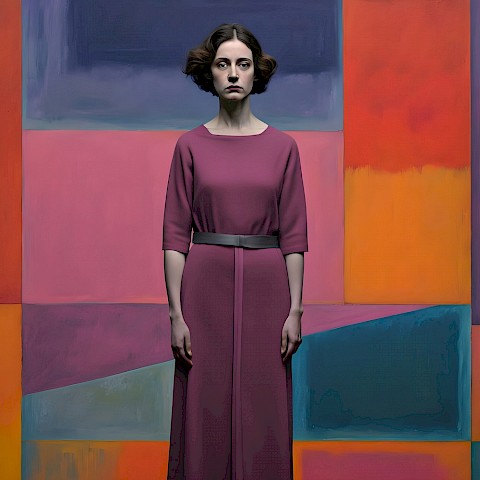|
30 VII 2025 |
12. Rome and After 1828-35
473 - Vision of Medea | |

| ||
|
While on his way to Italy in 1828 Turner wrote from Paris to his friend Charles Eastlake, who was already in Rome, asking 'that the best of all possible grounds and canvass size 8 feet 2 1/2 by 4 feet 11 1/4 Inches to be if possible ready for me, 2 canvasses if possible'. This was partly so that he could begin straight away on a picture for Lord Egremont, 'Palestrina' (see under No.331); the second canvas could have been for 'Medea' though the height is a bit greater. This was one of the three pictures Eastlake said Turner exhibited at Rome (see also Nos.472 and 474), telling Thornbury that "Turner's economy and ingenuity were apparant in his mode of framing those pictures. He nailed a rope around the edges of each, and painted it with yellow ochre in tempera' (Thornbury 1862, 1, p.221). The present reconstruction is by Lawrence Gowing. Lord Broughton, who was taken by the sculptor Thomas Campbell to see Turner's exhibits on 16 December, noted in his diary that 'The chief of these strange compositions, called the "Vision of Medea", was a glaring extravagant daub, which might mistaken for a joke - and a bad joke too. Mr Campbell told us that the Romans who had seen these pictures were filled with wonder and pity' (Finberg I961, P.311). The Moderne Kunstchronik, published in 1834 by J. A. Koch in collaboration with other German artists who were in Rome at the time, was equally scathing, perhaps in jealousy of the large and vulgar crowd which had gathered to see the exhibition of the world-famous painter, Turner. ... The pictures were surrounded with ship's cable instead of gilt frames.... The composition purporting to show the Vision of Medea was remarkable enough. Suffice it to say that whether you turned the picture on its side, or upside down, you could still recognise as much in it' (Gage 1969, pp.1045). At the Royal Academy in 183I the picture was exhibited with the following lines attributed to Turner's 'MS Fallacies of Hope' : Or Medea, who in the full tide of witchery Had lured the dragon, gained her Jason's love, Had filled the spell-bound bowl with Æson's life, Yet dashed it to the ground, and raised the poisonous snake High in the jaundiced sky to writhe its murderous coil, Infuriate in the wreck of hope, withdrew And in the fired palace her twin offspring threw. The critic of the Athenaeum for 14 May started off from these lines for his attack on the picture: 'The painting is of a piece with the poetry. Here we have, indeed, the Sister Arts - and precious sisters they are! Mr. Turner, doubtless, smeared the lines off with his brush, after a strong fit of yellow insanity ... The snakes, and the flowers, and the spirits, and the sun, and the sky, and the trees, are all in an agony of ochre!' The artist had achieved 'a gambouge phrenzy worthy of the Bedlam lines. . . . "Jaundiced sky!" - "a good phrase -a good phrase"!' But other critics, though deploring the main figures, found something to praise, albeit sometimes rather grudgingly. 'Colour! colour! colour!' exclaimed the Literary Gazette for 7 May; 'Still there is something so enchanting in the prismatic effect which Mr. Turner has produced, that we soon lose sight of the extravagance, in contemplating the magical results of his combinations'. For La Belle Assemblée for June 1831, 'as a combination of colour, the work is truly wonderful'. In some ways, despite the glow of colour that so astounded Turner's contemporaries, the picture looks back to his grand machines of the early 1800s. The use of a coarse Italian canvas is accompanied by something of a return to Titian, found even more in the large ' Venus reclining', similarly painted in Rome on an identical piece of canvas, which is based on Titian's 'Venus of Urbino' (Tate Gallery 5498). Comparing these pictures with the near-contemporary 'Orvieto' and 'Caligula's Palace' (Nos.472 and 485) makes it clear how much Turner adapted his style and technique to the kind of subject he was attempting. An image generated by an AI Machine Learning Model Property of the artist. | ||
